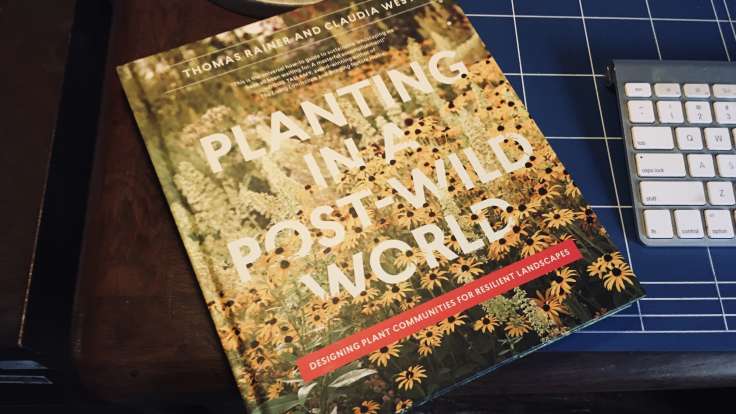
I found Planting in a Post-wild World both infuriating and illuminating
My entry into gardening was via the forest garden, so I find the emphasis on the ornamental in mainstream gardening quite perplexing, particularly after reading Benjamin Vogt’s A New Garden Ethic.
I was really intrigued by Sarah Wilson’s Roots and All podcast with Thomas Rainer, co-author of the renowned book Planting in a Post-wild World.
The book starts well, with ecological noises and talk of designed plant communities but I quickly lost patience. There is an imbalance inherent in the book because pretty much everything is from the human aesthetic perspective.
Despite the talk of ecology, not one animal is named throughout the book. There is even misconstrued criticism of native plant advocates who make “an ideology out of localism, elevating a plant’s geographic origin over it’s performance” pp15. Yes, but performance at what? Performance as a host plant for wildlife or aesthetic performance for humans?
The argument from native plant advocates is that entire ecosystems have co-evolved with native plants, so that native plants naturally support a wider range of wildlife. It is definitely not a question of “putting things back the way they were”, rather it’s about reinforcing the ecosystems that remain, as co-evolved co-dependency is arguably even more critical in a time of climate emergency.
I hit peak pique when I read the statement “Planting exists to please people.” pp144
To my mind, this attitude of human supremacy is the driving force behind our terrible relationship with the natural world (you know, mass extinction, climate breakdown). It really ought to be the other way round, people should exist to please plants and ecosystems, which in a virtuous circle would please people.
The lovely Andrew O’Brien did tweet in defence and I do agree with him in part. There is some good stuff in the book, particularly for a novice like myself, including 5 very sound principles, some good advice on soil preparation, the emphasis on management rather than maintenance, ideas for how to create plant communities etc.
Overall though, I think the book reflects an imbalance which lies at the heart of contemporary garden design. Much of garden design has the sense of irrelevance because it is first and foremost about how a garden looks, not how it works.
This is where the book gets itself properly confused, distinguishing between design and functional layers of planting: “The reason we call it the design layer is because its goal is to create visually pleasing horticultural effects” pp170
Let’s be clear, design is not how something looks. Design is a purposeful response to a specific challenge, it is not merely decoration tacked on to a “functional” layer.
It doesn’t take much to turn this around, we just have to start with how a garden properly functions, particularly in a time of climate emergency. Yes, for people, as a space to be. But also as a productive space. And equally as food and habitat for wildlife. Already, that’s looking far more balanced and sounding rather like a forest garden.